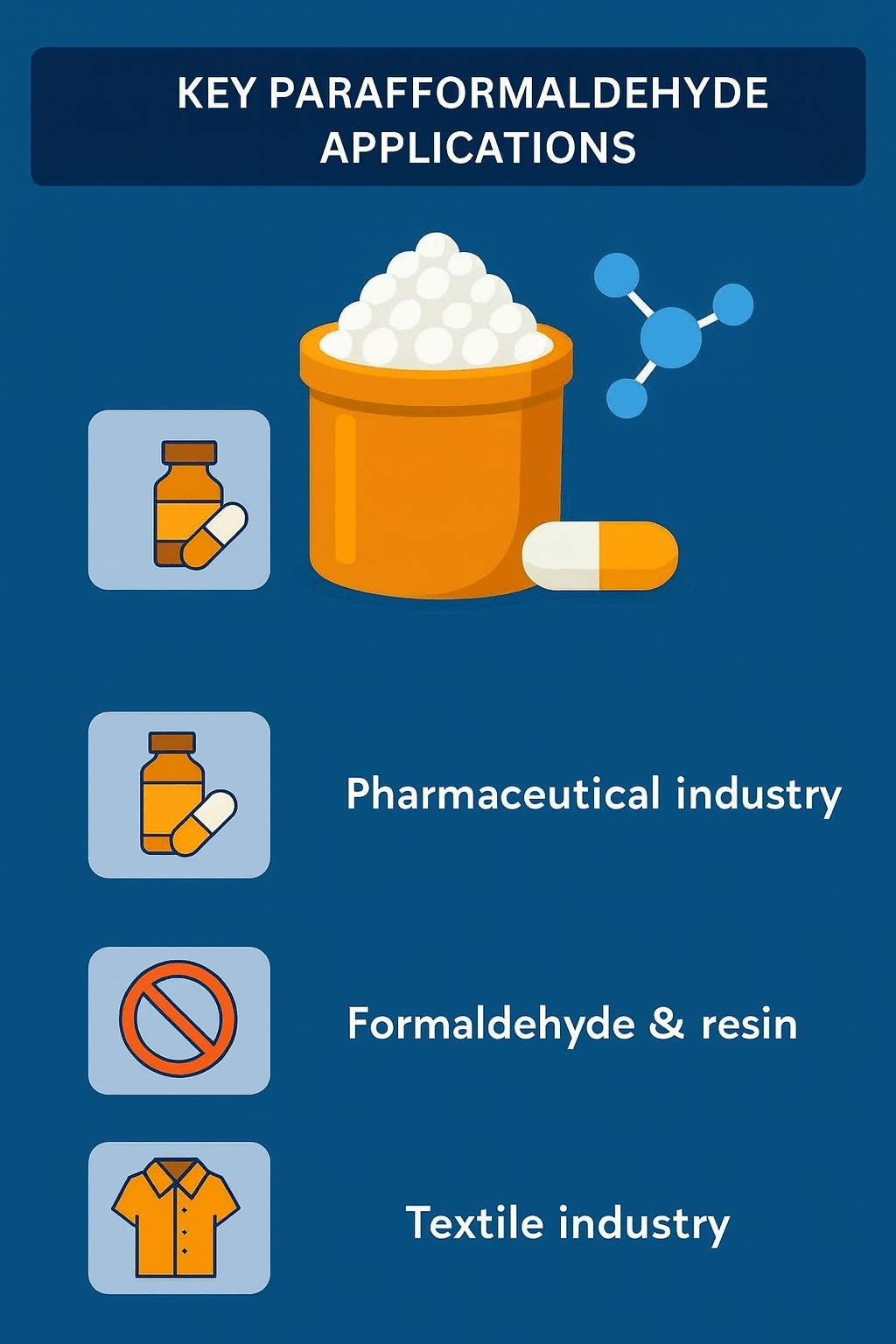Paraformaldehyde customs clearance in Iran (HS Code + documents & permits)
To estimate the time and cost of paraformaldehyde clearance, contact the Saba Tarkhis experts.
Immediate free consultation
1) Key applications of paraformaldehyde
2) Important notes for clearing paraformaldehyde
1. HS Code (customs tariff)
2. Required documents
Commercial Invoice: full details of price, weight, and packaging; must be accurate for valuation.
Packing List: package count/type, weights, and volumes to guide inspection.
COA (Certificate of Analysis): confirms quality and purity, issued by the manufacturer; required for quality checks and conformity with international standards.
Import permits: depending on end use, special permits may be needed from authorities such as the Ministry of Health, National Standards Organization, or other regulators.
Certificate of Origin: confirms manufacturing country and enables correct tariff application, including trade preferences.
3. Transport & storage conditions
4. Customs inspection & testing
3) Import & export conditions
4) Import/export volumes & global role
5) Best practices for paraformaldehyde clearance in Iran
Prepare full documentation (permits, transport docs, safety & packaging certificates).
Work with a specialist customs broker experienced in chemicals to accelerate processing.
Pay duties/taxes accurately and on time to avoid delays.
Follow packaging and transport standards suited to the chemical’s hazards.
| Goods | Short description | HS Code |
|---|---|---|
| Paraformaldehyde | Formaldehyde polymer; industrial/lab | 2912.1200 |
Final classification depends on form of supply, grade, packaging, and end use.
Need precise HS classification, permits, and document prep? Our team manages your case end-to-end.
Submit a proforma requestFrequently Asked Questions
What’s the HS Code for paraformaldehyde?
Typically classified under 2912.1200 (29121200). Final determination depends on technical specs and end use.
What permits are required for import?
As applicable: Ministry of Health (medical/pharma uses), National Standards Organization, and compliance with storage/transport safety for flammable chemicals.
What are the transport and packaging conditions?
Store in a cool, dry place away from direct sunlight; use moisture-resistant packaging; comply with dangerous-goods transport rules and proper hazard labeling.
Which documents are required for clearance?
Commercial Invoice, Packing List, COA, Certificate of Origin, Import Permits (as applicable), Bill of Lading, MSDS, environmental/safety permits, duty payment receipt, standards conformity, and customs declaration.
Premium customs services by Saba Brokerage
Saba Brokerage’s expert team offers tailored services for paraformaldehyde importers, including:
Pre-clearance consulting: specialist guidance on documents, permits, and full compliance to streamline every step.
Regulatory permits: end-to-end handling of health and quality permits with relevant authorities.
All customs formalities: declarations, duty/tax payments, and coordination for inspections and testing.
Safe transport: logistics coordination per international standards to reduce risk and damage.
Fast, optimized release: speed and cost-efficiency to minimize your total landed time and costs.
.png)
